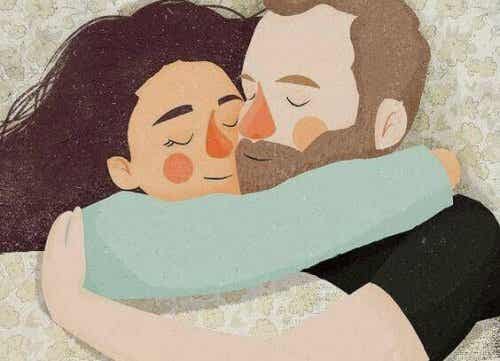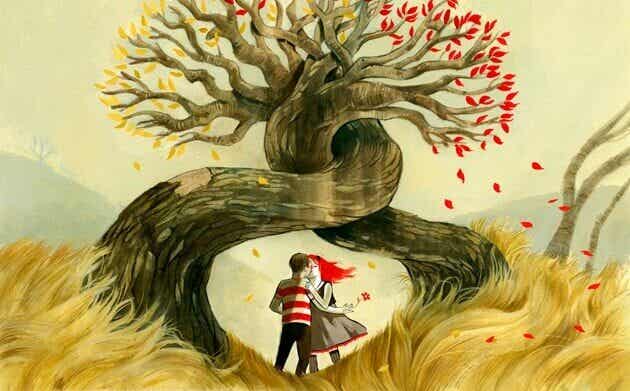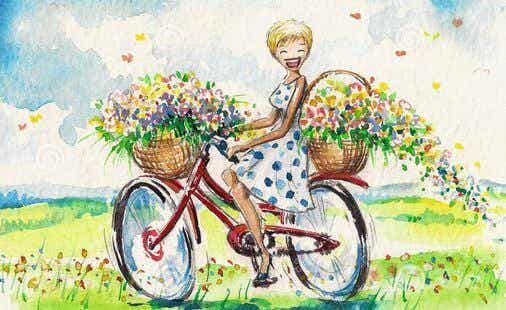
Last update: July 26, 2022
Sometimes we find ourselves like this, enveloped by an indefinable sadness, in silence, with our foreheads attached to a window pane and with our soul in our pockets. We don't know very well why this emotional state originated, but what we do notice is that we cannot face the day with the usual vitality.
What gives rise to situations of this type? We are not talking about a depressive state, one thing does not always have to do with the other, we are referring only to those days in which the thermometer of our state of mind drops to an existential zero. These are moments in which no enthusiasm arises, in which we turn into vagabonds of our routine and stateless of our hopes.
"We cannot prevent the birds of sadness from flying over our heads, but we can prevent them from making their nests in our hair"
It is good to have a clear idea: sadness is a messenger to be able to understand, but never a pair of shoes to wear permanently. However, nowadays we are not allowed to be sad. There is no room for this emotion to act as a channel for the brain itself. We are almost "forced" to ignore it and behave as if everything was going for the best, to win the Oscar for the best interpretation of the year, demonstrating that we are immune to disappointment, frustration and despair.
In any case, no one can keep this armor, this impregnable armor for very long. Although each of us has access to all kinds of information, books and publications, we continue to believe that sadness is little more than a pathological feeling.
Let's dispel once and for all the false myths about it, because this emotion is inherent in us as human beings, one thing that we must understand and that is not cured with the typical phrase "come on, stay up with the morale that you only live once. ". Sadness has several layers, these which form a particular kingdom of which we speak to you below.
1. Sadness is a warning
Sadness always manifests itself with a loss of energy. We do not immediately reach the state of discomfort and flattening typical of depression, it is a milder, more unnoticed process. We feel a strong need for inner concentration which is usually accompanied by a feeling of apathy and indefinable tiredness.
This physical sensation actually responds to a warning mechanism in the brain itself: it forces us to distance ourselves from the stimuli of our surrounding environment to connect with our inner self. We must "investigate" this something that bothers us, that worries us, that disturbs us ...
2. Sadness invites us to conserve "resources"
Bernard Thierry is a biologist and physiologist who has studied this negative emotion for years. According to these, sadness produces in us a small state of "hibernation".
It puts us on hold, relegates us to immobility and introspection so that we can reflect on a concrete fact. But not only that, through this process, the brain makes sure not to waste all the energy on activities that, at the moment, are not a priority.
The essential thing is to resolve the malaise, to focus on ourselves. However, as we already know, we don't always pay attention to this self-preservation instinct. We ignore it and we cling to our everyday life as if nothing had happened.
3. Sadness as self-care
There are many psychologists who do not want to label sadness as "a negative emotion". In our almost obsessive fixation to label any psychological conduct or phenomenon, we sometimes lose the right perspective to analyze this reality.
- Sadness is neither negative nor positive. We are alone in front of an emotion that acts as a warning mechanism, which suggests valid and necessary things like “stop for a moment and listen to yourself, take care of yourself, talk to yourself and understand what happens to you”.
- For this reason, when a friend, family member or partner tells us “I don't know what happens to me, I'm sad”, the last thing we have to say is “cheer up, it's nothing”.
The right phrase is really simple: "tell me what you need". This will force the person in front of us to reflect on the root of his problem and thus deepen his true needs.
4. Sadness as a yearning and inspiration
Sadness has a strange taste, it oscillates between longing and melancholy. It is lack of something, we feel so collapsed by opposing feelings, by voids and nameless needs that at times we despair.
It is often used to say that this emotion is the most refined form of sensitivity of the human being, the one that invites many to be more creative, to approach art, music or writing to channel all these opposing feelings.
However, and this is good to remember, although sadness may inspire the artist's heart, no one can live permanently in this realm of longing, melancholy and emptiness in which emotional immaturity dwells.
5. Sadness as a strategy for our psychological development
In this higher layer of Abraham Maslow's needs lies personal self-realization.
- We cannot forget that this almost ideal peak of psychological growth incorporates basic principles such as self-esteem itself and adequate emotional strength.
- The person who is unable to understand, examine and deal with his sadness opts for disconnection in which to leave his own needs, his own identity in foreign hands.
Understanding one's emotions and managing one's universe in the best possible way is a fundamental contribution to our psychological growth, for this reason it is good to stop associating sadness with terms such as weakness or vulnerability.
Behind every person who identifies and faces sadness, there is a true hero.
Images courtesy of Amanda Clark


























